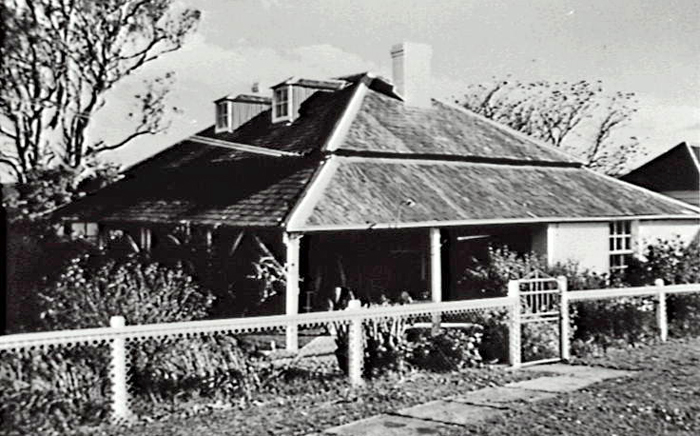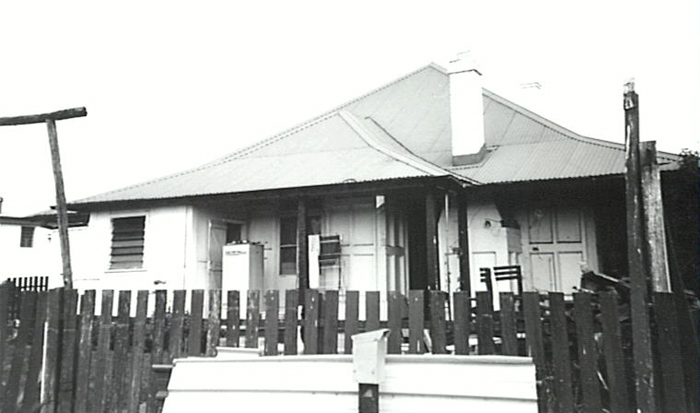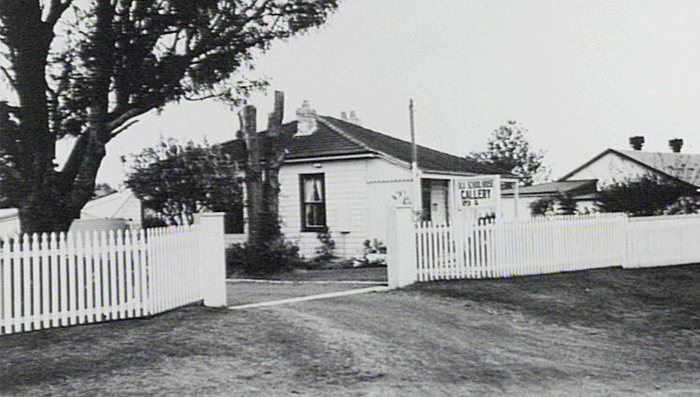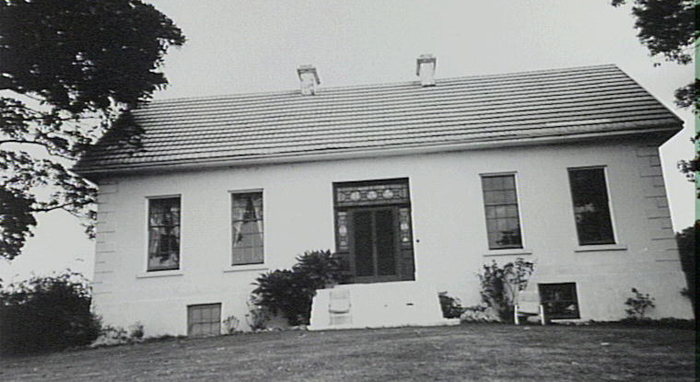Parish: Calderwood
County: Camden
Yallah is one of the southernmost suburbs in the Wollongong Local Government Area. It borders Lake Illawarra, and is a short distance from Albion Park Rail.
Local communities of Aboriginal people were the original inhabitants and Traditional Custodians of Illawarra Land. Their dialect is a variant of the Dharawal language.
Before European settlement, the Aboriginal people of the region lived in small family groups with complicated social structures and close associations with specific areas.
Suburb boundaries do not reflect the cultural boundaries of the local Aboriginal community.
Traditional Custodians today are descendants of the original inhabitants and have ongoing spiritual and cultural ties to the Land and waterways where their ancestors lived.
In 1823 William Browne, generally known as 'Merchant Browne', received a grant of 3,000 acres facing Lake Illawarra and a grant of 800 acres fronting the Macquarie Rivulet. This property was originally called Athanlin but later became known as Yallah. Athanlin was later purchased by Henry Osborne.
A 164 acre grant issued to P Larkins on 30 January 1837 is described as "at Yalla".
Yallah is an Aboriginal word for which a number of meanings are given, including:
- native apple tree
- a nearby lagoon
- "go away at once".
William Browne
William Browne was granted 3,000 acres in one grant, and in 1823 another 800 acres adjoining it. This land had frontage to Lake Illawarra and covered all the land lying between Captain Richard Brook's 'Exmouth' grant of 1,300 acres and Major Johnston's 'Macquarie Gift' grant of 1500 acres.
Browne's estate was known as 'Athanlin' by the grantee but is better known as Yallah. "Yallah railway station is within the 3,000 acre grant, and the bridge on the South Coast Road, crossing the Macquarie Rivulet, is at the south east corner of the 800 acre grant." (Lindsay 1994, p. 14).
See the Koonawarra page for more information about William Browne.
Henry Osborne
Henry Osborne received a grant of 2,560 acres in the Yallah district. It was an irregularly shaped piece of land that "fitted like a jigsaw puzzle between the properties of Isaac Nicholls, D. Johnston, G. Johnston, William Browne and A. Elyard. The property was named 'Marshall Mount' after his wife Sarah's maiden name" (McDonald 1976, p. 16).
George Johnston
George Johnston was the former 'Major Johnston', the front man of the infamous rum rebellion. He was court-martialled and cashiered back to New South Wales with instructions to Governor Macquarie to treat him as he would any other settler.
Macquarie had a policy of conferring favours and benefits on reformed characters, and Johnston became one of his beneficiaries.
'Macquarie Gift' was a grant of 1,500 acres given to Major Johnston on 24 January 1817. It was one of the first lot of land grants in the Illawarra. It was located just on the Dapto side of Marshall Mount and ran north-west from Macquarie Rivulet to straddle the future line of Marshall Mount Road from Marshall Mount School, almost to the Yallah Road junction.
A few years later a grant was made to George Johnston's son David comprising 600 acres and a further grant of 700 acres was also made to him. These two grants lay adjacent to the 'Macquarie Gift' farm on the north bank of the Macquarie Rivulet.
Also adjoining the grants to David Johnston was an area of 600 acres granted to Isaac David Nicholls, a relative of the Johnston's, on 1 May 1833 (McDonald, 1976; Lindsay, 1994; Cousins, 1994).
George Johnston was an absentee landlord but some of his descendants figured prominently in Illawarra History.
Henry and Sarah Osborne
Henry Osborne was born in Northern Ireland on 8 February 1803. He was the youngest of a family of 10. Two of his older brothers, John and Alick, were naval surgeons who came to Australia in charge of convicts and liked what they saw. Alick Osborne settled in Dapto on an estate known as 'Daisy Bank' and sent for his youngest brother Henry to join him in the "Promised Land."
Henry married Sarah, the eldest daughter of the Reverend Ben Marshall of Dromore, Ireland. Henry and Sarah sailed for Australia on the 'Pyramus' which reached Sydney in 1829.
Henry sold linen and bolts of cloth to advantage upon his arrival and applied for a land grant. He received 2,560 acres in July 1829 and called it 'Marshall Mount' after Sarah's maiden name.
Unlike other early land grantees, Henry and Sarah settled at 'Marshall Mount' living at first in 'Pumpkin Cottage' in fairly primitive conditions. Before long Henry had acquired more land, a further 5,000 acres. He went on adding to his estates in the 1840s and secured Charles Throsby Smith's 'Calderwood', Elyard's 'Avondale', William Browne's 'Athanlin', Brooks' 'Exmouth', and numerous smaller grants.
Although he was by no means a wealthy man when he came to the Illawarra, he had great ability as a cattleman and had good herds in the 1840s which contributed significantly to the early dairy industry in the Illawarra. He and his brothers imported high grade cattle and in 1843 the three brothers held a private show of these cattle and farm produce in Wollongong. His central Illawarra estate extended from Lake Illawarra to the mountains.
Henry was not only a dairyman and major land owner. "In December 1839, he set out from Dapto, with one free settler, three convicts and three aborigines (sic), to drive a mob of cattle, sheep and horses to Adelaide. The party were four months on the way, but brought 855 cattle, 800 sheep and 62 horses safely through." (McDonald 1976). Thus Henry Osborne became one of the "Overlanders" who came to the relief of the South Australians who were on the brink of starvation.
Henry Osborne also took a prominent part in all public affairs in the Illawarra. He died on 26 March 1859 aged 56, leaving "property estimated at nearly half a million of money, with collieries, the prospective value of which is almost impossible to compute." (McDonald 1976, p. 18).
Henry Osborne had a large cattle property, 'Marshall Mount', at Yallah. He was one of the founders of the early dairy industry in the Illawarra and in 1843 he and his brothers were importing cattle. They had a private show of these high grade cattle and farm produce in Wollongong and this gave an incentive to establish the first Illawarra Agricultural Association (McDonald 1976).
The Evans family from 'Penrose' in Yallah were pioneers in the early dairy industry and were well known as expert dairymen.
Jersey cattle became popular in the Illawarra because the milk of the jersey is particularly rich in butter and fat. Throughout the district many dairymen had Jersey herds. Amongst these were the Brown Brothers of 'Wollingurry' on the Yallah estate. For many years their father was a successful dairy farmer at West Horsley with a shorthorn herd. "In 1902 the Brown Brothers bought 'Wollingurry' a neglected property at Yallah, stocking it with Jersey cattle from their father's pure bred herd, thus founding the Wollingurry stud…" (Cousins 1994, p. 111).
Like their father, the Brown Brothers were excellent farmers. They changed a neglected property into a valuable one, with many paddocks, well cultivated, well grassed and capable of supporting four families. This was a model farm with a model herd.
In the early 1900s there were several factories for dairy products in Dapto. The Dapto Co-operative Dairy Company was established in 1900 (Cousins 1994).
A trend towards fewer and larger farms occurred before World War One and the outbreak of war accelerated industrialisation in Wollongong, pushing farming to the fringes.
The greatest industrial expansion in Yallah took place following World War Two with the most significant industry in the Dapto area being the Parrish Meatworks at Yallah. In 1952 the first section of the Tallawarra Power Station was commissioned and by 1961 the entire power station was operating. Hancocks Skins and Driers was also operating at Yallah opposite the stock and sale yards.
The main substation at Yallah was completed in 1966 and a wrecking yard was also established. Two large meatworks were established on Yallah Bay Road by Dorahy Brothers and the Illawarra Meat Company. The industrial area on the Princes Highway at Yallah was expanded to contain approximately ten industrial and commercial establishments (Secomb, 1999).
The two main roads through Yallah in the 1800s were Major Mitchell's South Coast Road which was marked out in 1834, and Marshall Mount Road.
The South Coast Road cut through William Browne's 'Athanlin' "avoiding a considerable detour in the present road and a bad swamp crossing this near its head, where it is very narrow." (McDonald 1976, p.35).
Marshall Mount Road "formerly a bye-road used by Henry Osborne by Weston's permission, for which Osborne used to write annually" (McDonald 1976, p.41) was by 1886 a public road. This road included a creek crossing at the Municipal boundary between the Central Illawarra and Shellharbour councils. This crossing was notoriously difficult and dangerous and became a bone of contention between the councils.
The road from Marshall Mount to Yallah was a by-product of the building in 1887 of a railway platform at the South Coast Road level crossing. This railway platform was originally called Albion Park (McDonald, 1976).
The Yallah railway platform was opened with the Kiama extension in 1887 under the name of Albion Park. It was renamed Yallah on the opening of through-traffic from Sydney on 3 October 1888. Its location was due to its nearness to the level crossing of the road leading to the Albion Park Township.
There was also a Tallawarra Power Station siding constructed in 1951. This was a junction for a two mile branch to the power station on the shore of Lake Illawarra. It was constructed for the purpose of installing heavy machinery (Singleton, 1964).
Penrose (formerly Penrose Villa)
Address: Princes Highway. Yallah
Penrose is a Late Georgian Cottage built in 1852 from bricks made on the property. It has a verandah to three sides and a detailed brick kitchen with a stone flagged floor. It is a single storey residence made from sandstock brick with a slate roof and outhouses. The garden also has heritage value (City of Wollongong Heritage Study, 1991).

Image: Penrose, image number P01843.
Original Residence next to Yallah "Woolshed" complex
Address: Princes Highway Yallah
This original residence was built around 1910 and is a rare example of onsite concrete construction. It is an owner-built insitu concrete residence with a corrugated metal roof. This roof replaced the original terracotta roof tiles. The "Woolshed" operated as a wool-store and skin-drying shed up until the 1980s (City of Wollongong Heritage Study, 1991).

Image: Original residence at Yallah, image number P11556.
Former Marshall Mount Public School and Schoolmaster's Residence
Address: Marshall Mount Road
This single storey weatherboard building with a skillion gable roof was built in 1897. It is typical vernacular school house architecture and was a significant element in the Marshall Mount village district (City of Wollongong Heritage Study, 1991).

Image: Former Marshall Mount Public School, image number P12362.
Marshall Mount House
Address: Marshall Mount Road, Albion Park
Although this building is located in Albion Park, it is significant to Yallah's history. Its original residents were Henry and Sarah Osborne who settled at 'Athanlin', otherwise known as Yallah.
It is a single and two storey residence with rendered brickwork and weatherboard, corrugated metal and tile roof. The original slab cottage was demolished and the single storey section was built c1838. The double storey was built c1840. This is a good and very rare example of colonial architecture in a rural setting (City of Wollongong Heritage Study, 1991).

Image: Marshall Mount House, image number P12355.
The environment of Yallah varies as it is a large area bordered by Lake Illawarra to the east, Marshall Mount Creek and the Macquarie Rivulet to the south and the Tallawarra Power Stations site to the north.
There are a range of remnant vegetation species in Yallah, mainly acacias, eucalypts and melaleucas. For a map of these species please refer to the IROC Remnant Bushland Database map.
Some of the vegetation zones outlined by the Yallah Local Environment Study 1991 are:
- Deflation Basin Community. Consists of the decumbent native perennial cotula coronopifolia. This plant generally grows in water less than 0.5 metres deep and is tolerant of a wide range of water salinities.
- Erosion Basin Community. Has dominant species of juncus usitatus and scirpus prolofer, although heavy grazing of these species has reduced the height of the tussocks and polygonum lapathifolium also appear to dominate. Introduced pasture grass species particularly cynodon dactylon also contribute substantially to the vegetation in areas covered by this community.
- Ancient Creek Channel Community occupies a similar habitat to that found in the erosion basin and is very similar. Some other species found in this community include: juncus aricidicola, juncus acutus, cotulata coronopifolia and scirpus validus.
- Pasture Lands. Most of Yallah is covered by this community which is dominated by exotic grass species. The area was probably originally covered with stands of the swamp she oak, casuarina glauca, but only a few scattered older trees remain. The ground is thickly covered by planted pasture species dominated by cynodon dactylon and including stenotaphrum secundatum and sporobolus virginicus.
- Wet Meadow. These areas contain a higher proportion of sedges and juncus species than dryer pasture areas.
- Primary Saltmarsh Community. This community occurs in a band along the waterfront of Lake Illawarra in a zone periodically inundated with the saline waters of the lake. The dominant species is sarcocornia quinqueflora, a common succulent saltmarsh species which lacks leaves and has a jointed turgid stem. Co-dominant species in some areas are suaeda australis, a common straggling saltbush, and cotulata coronopifolia. Other common species include elocharis pusilla, polypogon monspeliensis, samolus repens and triglochin striata. None of these species attain a height in excess of 0.25 metres.
- Secondary Saltmarsh Community. This community is dominated by the juncus species.
- Seagrasses .The seagrass stands in Haywards bay consist predominantly of zostera capricorni although the macro algae gracilaria verrucosa and enterompha intestinalis also contribute to the vegetation.
The primary use of land in Yallah for grazing has degraded the area as a suitable habitat for many of the large indigenous animals.
The freshwater wetlands around Lake Illawarra are still however, a significant bird habitat. The following species are frequently sited in Yallah:
- Great Egret
- Cattle Egret
- Lesser Golden Plover
- Grey Plover
- Crested Tern
- Caspian Tern
- Eastern Curlew
- Greenshank
- Common Sandpiper
- Curlew Sandpiper
- Japanese Snipe
- Bar - tailed Godwit.
(Dames & Moore, 1991)
| Date | Event |
|---|---|
| 1817 | Major Johnstone received a grant of 1,500 acres known as 'Macquarie Gift' |
| 1823 | William Browne was granted 3,000 acres in one grant and 800 acres in another in 1823; the property was called 'Athanlin' but was better known as Yallah. |
| 1829 | Henry Osborne received a 2,560 acre grant in the Dapto District known as Marshall Mount' |
| 1833 | Henry and Sarah Osborne settled at Marshall Mount in 'Pumpkin Cottage' under fairly primitive conditions |
| 1834 | The Main South Coast Road was marked out through 'Athanlin' (Yallah) |
| 1839 | Henry Osborne became one of the original 'Overlanders' driving a mob of sheep, cattle and horses to Adelaide |
| 1840s | Henry Osborne went on adding to his estates securing 'Calderwood' Avondale', 'Athanlin', 'Exmouth' and numerous other smaller grants; his estate extended from Mullet Creek to the Macquarie Rivulet |
| 1841 | The property 'Penrose' was settled in 1841 and the house 'Penrose Villa' was built in 1852 from bricks made on the property. This house was the home of Evan Evans and his descendants, well known in the Illawarra as expert dairymen |
| 1841 | Marshall Mount House was completed and was known as one of the finest houses in the Illawarra |
| 1843 | Henry Osborne became one of the founders of the early Illawarra Dairy Industry and had a private show of high grade cattle which gave the incentive to establish the first Illawarra Agricultural Association |
| 1859 | The school at Marshall Mount was opened |
| 1859 | Henry Osborne died leaving his large estate to his family |
| 1866 | Marshall Mount Road was made a public road and the creek crossing became a problem for the Central Illawarra and Shellharbour councils |
| 1870s | Dairying was the primary industry in Yallah |
| 1887 | Yallah Railway Platform was opened and a road from Marshall Mount to Yallah was built |
| 1890 | Hamilton Osborne sold off the remaining 3,300 acres of 'Marshall Mount' in 22 lots ranging from 86 to 290 acres |
| 1890-1950 | Dairying continued in Yallah by such families as the Evans of 'Penrose' |
| 1945 | The most significant industry operating in the Dapto area after WWII was the Parrish Meatworks at Yallah |
| 1952 | The first section of the Tallawarra Power Station was commissioned, four years after its construction was announced |
| 1954 | Tallawarra Power Station commenced operation |
| 1961 | Tallawarra Power Station was in full operation |
| 1966 | The main substation at Yallah was completed and a wrecking yard on the highway established |
| 1970s | Two large meatworks were established on Yallah Bay Road |
| 1987 | Yallah Meatworks were closed because of encroaching residential developments |
| 1989 | Tallawarra Power Station closed |
| 1991 | Parrish Meat Supplies ceased operation |
| 1992 | A 200 lot residential subdivision and 18 hole golf course development at Yallah was proposed for the site south of the Macquarie Rivulet behind the former Tallawarra Power Station ash ponds |
| 1992 | Yallah Woolshed opens as a bush dance barn |
| 1999 | Submission made to the Geographical Names Board to change the boundries of Yallah and create the new suburb ‘Haywards Bay’, which would encompass the new ‘Haywards Bay Estate’ |
| 2002 | The site of the Tallawarra Power Station is proposed for a gas fired power station |
| 2005 | Yallah Woolshed becomes the Yallah Roadhouse and operates as a live music venue |
| 2006 | Construction of the new gas fired power station at Tallawarra by TRUenergy begins |
| 2007 | Yallah Roadhouse closes its doors |
Top image: Residence at Yallah. See image details on our catalogue
